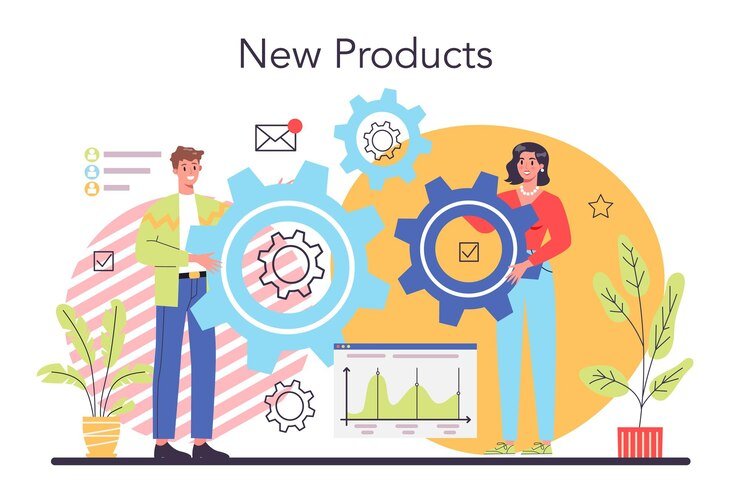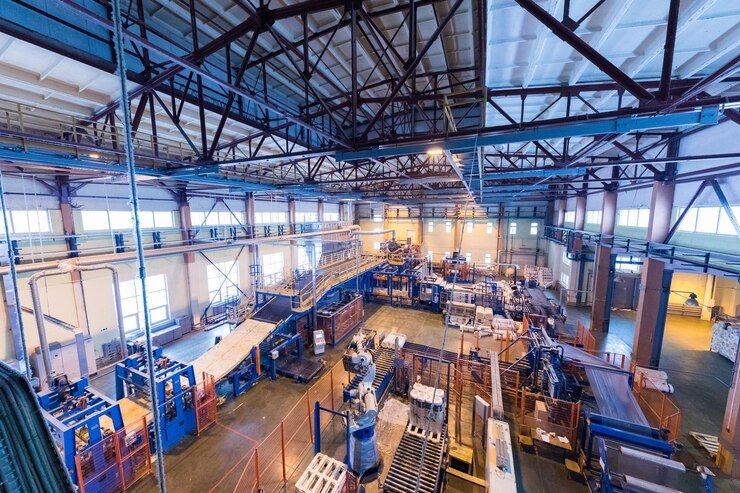
3.1 Product Development

Product development, either relating to the refinement and
redesign of an existing product or the creation of a new one, is a process which
incorporates the conceptualisation, design, development, marketing and eventual sale of
goods or services in the marketplace. Many organisations invest thousands or millions of pounds, representing large proportions of their
budgets, in product development, with the objective of creating new and exciting products that
appeal to customers, encourage them to purchase and ultimately, increase the business' profits and
market share.
There is often a great deal of competition between companies in the same market to develop the
newest, most innovative and exciting products, in order to lure customers and provide the company
with a competitive advantage over its rivals, increasing its market share. This is one of the reasons
that product development is often quite a secretive and closely guarded process.
3.2 Identifying your target market

One of the first important things to recognise in the early stages of
product development is that not every product will appeal to every customer and it is
unrealistic to believe this to be the case. Identifying what the target market for the product is will enable it to be designed in the manner
most likely to satisfy the needs of the specific type of customer that the business is targeting. Although there is no one proven way to do this with full accuracy, here are some good tips on how to
identify the target market for your product or service.
Product/Service Features
Firstly pick out the most important features of your product or service, or the problems that it is
trying to solve and, from this, work out a base customer profile, which is the person who is most
likely to buy it. You can do this in a number of ways. If you already sell a similar product, look at
your current customer base and why they are buying from you - do they share a common
characteristic or interest? What has drawn them to your company, why are they choosing to be your
customers?
Your Competition
Secondly, take a look at your competition and research who they are targeting and who their current
customers are. By doing this, you may actually stumble upon a niche market that you are
overlooking with your own product or service.Demographics
Thirdly, decide upon the specific demographics that you intend to target. This is the more scientific
part of the process and there are numerous companies or computer programmes that can help you
in this approach. Essentially, you will need to look at all important factors, such as gender, age, education level, income level, occupation and ethnic background, to try to draw a picture of your target market.
A relatively new concept in this vein is that of psychographics, which is basically the classification of
potential customers in accordance with their attitudes or aspirations. These take into account the softer measures, such as values, hobbies, morals and behaviours and are
hugely important in working out the personal motivations that influence buying behaviours.
3.3 Conducting market research

You should aim to undertake quantitative market research at all
stages of the design process, in order to ensure that your thinking and product
development is on track and is akin to the needs and wants of your customers. Good market research can prevent organisations from becoming complacent and too quickly and
easily making rash or unjustified assumptions about customer needs. Quite often, the findings of
your market research will bring up something that will surprise you!
Market research incorporates two types of data:
Primary information, which is the information that you compile yourself, or somebody does on
your behalf
Secondary information is the type of research that already exists and that you just need to
refer to and analyse. This might include government reports or statistics, industry insights, etc. Breakdowns of the demographics of your target geographical area are likely to be helpful, as are specific market statistics published by expert organisations - or even by your
competitors .When you carry out primary market research, there are two basic sorts of data that you can compile
- exploratory research or specific research.
Exploratory is open-ended in nature and aims to ask loose, unstructured questions, to encourage lots
of discussion and generate lots of ideas for further analysis. Specific research is much more targeted and precise in nature and is generally utilised when you
have a specific question or problem that you want to address and you want your customers' input to
help you to do so. There are a few different ways to collect data from your market research and you may choose to use
some or all of them, depending on your requirements.
The main methods are direct mail (postal, email, or web based), telephone, or personal interviews. Using direct mail market research
This is the process of sending out surveys or questionnaires for respondents to complete either by
hand, by email, or on a web based programme.
Here are some useful tips to maximise your chances of response and success via a direct
mail approach:
Personalise your questionnaire, adding the respondent's name and greeting them personally
where possible. Also try to ensure that you have targeted them correctly and that they will be
personally interested in the product or service that you are researching.
Try to keep your questions relevant, punchy and to the point, as well as keeping the length of
the questionnaire as succinct as possible, in order to hold the respondents' interest
Consider offering an incentive to the respondent for completing the questionnaire. Discounts
on future purchases or the opportunity to win a prize can often tempt otherwise sceptical
potential customers to engage
Using telephone surveys as market research
Telephone surveys generally have a better response rate than direct mail.
Here are some good tactics
Confirm the individual's name at the beginning of the call and try to personalise the message
and tone where possible, in order to build some rapport
Follow a script, to ensure that you cover all key points, buy try not to make the interview
sound too mechanic
Try to get the respondent to agree to a possible follow-up call, in the event that you need
further information from them
Using personal interviews as market research
Many businesses believe personal interviews to be the most effective source of data about their
products, although they are of course the most time consuming and potentially expensive too and
therefore cannot always be used widely.
Personal Interviews:
Group surveys, also known as focus groups, are commonly used by larger organisations to
introduce potential customers to products, even allowing them to try them out or look at them, adding an extra dimension to the research
One on one interviews potentially give a great opportunity to get lots of detailed information
from one person and can be particularly valuable if you choose your interviewee wisely and
believe him or her to be representative of your target customer.
3.4 Frameworks of product development

Many believe the process of product development to be purely
creative in nature, dealing only with conceptual design.
Although this is an important aspect, there should be no underestimating the importance of a
defined process and structure in the field of product development, in order to ensure that the
business is creating products or services that are not only well designed or cutting edge, but are
genuinely useful and desired by their target customers. Products that win awards for state of the art design are not necessarily those that sell in big
numbers.
Below are some key parts of the product development process:-
Identifying your design criteria
This step is essentially a data gathering and brainstorming one, involving the design team coming up
with as many ideas or concepts as possible to meet the criteria, problem, or gap in the market that
has been identified. When the most suitable idea has been identified as a potential product, a more
structured development plan will be implemented.
Analysis of ideas
This requires a more detailed examination of the concept of the product, to ensure that it is
workable in the desired market. It is in this stage that market research, as discussed above, comes
into play, in order to give the business more concrete insights into whether or not the product is
likely to be viable.
Prototyping
This process is quickly creating a model of the original concept, unlikely to be as refined as the
definitive version, but allowing the business to see a more realistic product and is also a good thing
to use in the market research exercises or when making sales pitches to vendors of the product. It is
basically a good starting point for the final manufacture of the product which will come later and is
an opportunity to identify any major or critical design faults or issues.
Market strategy
This more structured part of the process aims to ensure that the design concept is fully viable, makes business sense and will add value to the business. This cannot be determined, until the steps
above have been followed and the necessary work has been undertaken to make sure that the
product will be successful.
This step can be further broken down into four areas, or the four “P”s, as follows:
Product: the goods or services that have been designed to meet the requirements of the target
customer
Price: choosing the most appropriate price is a delicate balancing act - too low and your
margins will not be sustainable, too high and you risk alienating your customers and losing
ground to competitors
Promotion: the objectives here are to present the product or service to the target market and
illustrating the value of it, thereby increasing and building on the demand for it. This may
include public relations, marketing campaigns and advertisements. We will discuss the
marketing of products and services and your involvement as an Operations Manager, later
Placement: this considers whether the product or service will be provided to customers via
shops, the internet, or an omni-channel approach. Of course, much of this depends upon the
type of product or service that is being sold and where the target customer is most likely to go
to buy it
Fact
Market research began to be conceptualised and put
into formal practice during the 1920s, as an offshoot of the advertising boom of the golden age of
radio in the U.S.
Source: Wikipedia - Market research.
3.5 A case study in product development - McDonald's
Restaurants

McDonald's offers a good example of an organisation which takes
great care to ensure that its product line appeals to its target customers in the right way, maximising its market shares, sales and profits along the way. The first thing to note is the fact that they retain a core menu of their most popular dishes, including
the hamburger, cheeseburger and Quarter Pounder and make very little variation to this, either from
a time, recipe, or geographical perspective. The purpose of retaining this core menu is to ensure
that there is always something familiar for customers when they visit and also has the advantage of
supporting their core branding.
However, this strategy is cleverly combined with a robust temporary product plan, whereby the
company regularly develops new dishes, supported by large-scale marketing activities, in order to
maintain interest levels and keep the menu fresh and varied for the customer. Examples of such
dishes are the McRib - a product that is only launched seasonally - and burgers which tie into key
themes, such as big sporting events. The final strand of the McDonald's product strategy is the realisation that tastes differ across the
different territories in which it operates and a willingness to adapt to these differences can pay great
dividends, in terms of sales.
For example
McDonald's has added a dish to the menu in parts of Canada called the McLobster, which is a
variation of the traditional local lobster roll sandwich and cannot be found on their European or
Asian menus. This clever strategy ensures that local customers can find foods to suit their taste in
the restaurant.
In a similar way, McDonald's also adapts the recipes of some of their standard products, in order to
make them more appealing in local markets. For example
In Greece the traditional Big Mac burger has been changed to use pitta bread instead of a bread
bun. The fluidity with which McDonald's implements its product development has undoubtedly helped it
to retain a fresh and competitive edge in the global fast food market.
Activity 1
Estimated time: 15 minutes
You are the Operations Manager for a large organisation which manufactures and sells greetings
cards. You are in charge of creating a market research strategy for a new line of small birthday gifts.
Whilst there is no set budget, you have been asked to control your costs and justify your spending in
the area. Outline your market research strategy, with justifications.
3.6 The production and scheduling process

Once the product ideas have been created, tested and developed, the next step
is to begin the actual production process itself.
This process involves two key sets of resources, as follows:
The transforming resources include the buildings, machinery, systems and people that carry
out the process
The transformed resources are the raw materials and components that are finally converted
into end products for the consumer
Most production takes place across a production chain, with discrete yet interlinked steps, which all
contribute and add value towards the creation of the final product or service. There are three main
types of production process that we will discuss here, these being job production, batch production
and flow production.
Job production
This method involves the production of single items, either by one or a team of operatives. It is often
used when a number of identical units need to be produced at one time. Job production is generally
for a single operation which needs the full attention of the operative before they can move on to the
next job. The main advantages of a job production method is that it creates a specialist and unique product
which has been scoped out at the design stage. It is in this way that it is often for a specific customer
order, rather than a general sale. A good example of this from a service perspective could be a haircut, which is individual to each
customer at hand.
Another key advantage of job production is the fact that the design or specification can be tweaked
or changed throughout the process, offering maximum flexibility to the customer - and the person
carrying out the operation has a high degree of autonomy and probably specialist skills, potentially
giving them a higher degree of job satisfaction.
Batch production
Sometimes also known as intermittent production, batch production is a process whereby a group of
components go through a production process together, with a new batch beginning after a previous
one has ended. This method is often used for goods which are close in make up to each other and
therefore, the same machinery or equipment can be used, with small tweaks on settings or process. The main benefits of this approach are the fact that a business can utilise the same machinery and
equipment, thus benefitting from cost savings and less training is required to upskill the workforce, as the tasks are more uniform in nature to each other. Businesses can also enjoy economies of scale, through bulk buying materials for the products.
Flow production
Flow production is similar in some ways to batch production, with the main difference being the fact
that it is more of a continuous process of parts and sub-assemblies which move from one stage to the
next until completion of the finished product. There are no “rest” stages - instead, units are moved to
the next stage of the process without the need to wait for a batch to be completed.
This approach depends on a high level of efficiency and accuracy, in order to ensure maximum
success and also requires a continuity of demand, in order to prevent the issue of over-production
and subsequent storage or wastage costs. Production planning is therefore of the upmost importance, to ensure a smooth production flow. The main advantages of flow production is the fact that many production costs are minimised, due to
the detailed planning that is required in advance and the increased use of technology and
automation that the method relies on.
Also, quality issues or omissions can be quickly identified and
picked up on the production line, potentially reducing wastage and improving overall quality.
Just in Time Production (also known as Lean Management)
We have already mentioned this approach in earlier units, but would like to focus on it in a little
more detail in this module, due to its potential relevance. Just in time (JIT) manufacturing is a
method of production in which goods are produced in order to meet demand only, without creating a
surplus and without making them in advance of requirements. The main objective of this system is to
avoid the inevitable waste that goes hand in hand with overproduction, waiting and excess
inventory. The principles of the JIT method were first described by Henry Ford in the 1920s, but achieved
popularity and notoriety by Toyota as part of the Toyota Production System, as a means of
eliminating waste.
The main alternative to JIT production is manufacturing excesses extra to
immediate requirements, which is sometimes known as just in case (JIC) production. Toyota themselves refer to JIT as the philosophy of complete limitation of waste, on their website. This therefore expands the definition from simply the production process and into all other areas of
the business, including human resources, technology, supplier relations, etc.
From a production perspective, Toyota aims for its JIT method to eliminate or reduce waste
from the following seven key areas:
Waste from overproduction
Waste of waiting time
Transportation waste
Inventory waste
Processing waste
Waste of motion
Waste from product defects
You can clearly see from the above seven areas that the objective is to make production leaner in an
all-encompassing manner, not just by simply manufacturing fewer products.
For example
Waste of waiting time aims to make the production process slicker, so that there are no time lags or
gaps between stages, which can contribute towards wasted time or resources.
Activity 2
Estimated time: 10 minutes
Do some further research on JIT/Lean production methods and answer the following questions:
Are there any components of this process that your business currently carries out? Do they add any
value?
Are there any opportunities to introduce more lean management processes to your business? If so, where?
3.7 How is Kanban used in JIT production?
Kanban is one of the methods used to achieve success in a JIT
programme. It is a system in which the supply of components is regulated by using a set of visual instruction
cards, which are placed along the production line. In its simplest form, Kanban is a card with an inventory number relating to a particular part or
component of the finished product, detailing all of the product's information, such as its name, code
and storage location.
Just before the part is used in production, the Kanban card is detached and sent up the supply chain
to request that another, duplicate component takes its place - i.e. the component is only released or
ordered if a Kanban card has requested it. Kanban works in a particularly structured way, with six universally recognised principles, in order to
guarantee its success. Also used in Toyota as part of the JIT/Lean method, it is used in other
organisations with a production-heavy focus, where savings in terms of waste are sought.
Fact
Taiichi Ohno, an industrial engineer at Toyota, developed Kanban to improve manufacturing efficiency.
Source: The Economist
Other examples of JIT or Lean management in practice
Toyota and other Japanese companies are not the only ones to recognise the benefits that lean
management can bring to their operations. Intel, the world's largest producer of computer chips, have implemented a similar method, stating the following:-
“Five years ago, it took us 14 weeks to introduce a new chip to our factory - now it takes 10 days. We
were the first Intel factory to achieve these times, using Lean principles.” As we have mentioned, Henry Ford challenged traditionally held ideas in his book My Life and Work, giving the example of a farmer who carried water up a ladder instead of fitting water pipes as
“waste motion” and demonstrated that spending resources on improvements to the production
process was a justifiable expense, due to the increased efficiency and reduction in waste that it
achieved.
The drawbacks of JIT production
We have talked a lot about the phenomenon of lean manufacturing and how it has been adopted by
diverse organisations around the world. However, there are inevitably some downsides to its
implementation, making it not necessarily suitable for every business or scenario. The first potential drawback is that it can sometimes generate a negative perception by employees. This is likely to be linked to the fact that its focus on less waste and fewer resources could extend to
the use of less manpower and a potential impact upon their own roles. It may even mean an eventual
de-skilling of the workforce across the board and a loss of talent.
Secondly, the implementation of the system requires great care and organisation, or it may have the
opposite effect to that intended and result in a lack of products to meet customer demand, which can
have potentially long term damaging consequences for your brand.